
19th, 20th & 21st Century Fine Prints
707-546-7352 · fax 707-546-7924 · web: www.annexgalleries.com · email: artannex@aol.com
Corps Noir III (Black Body 3) by Terry Haass
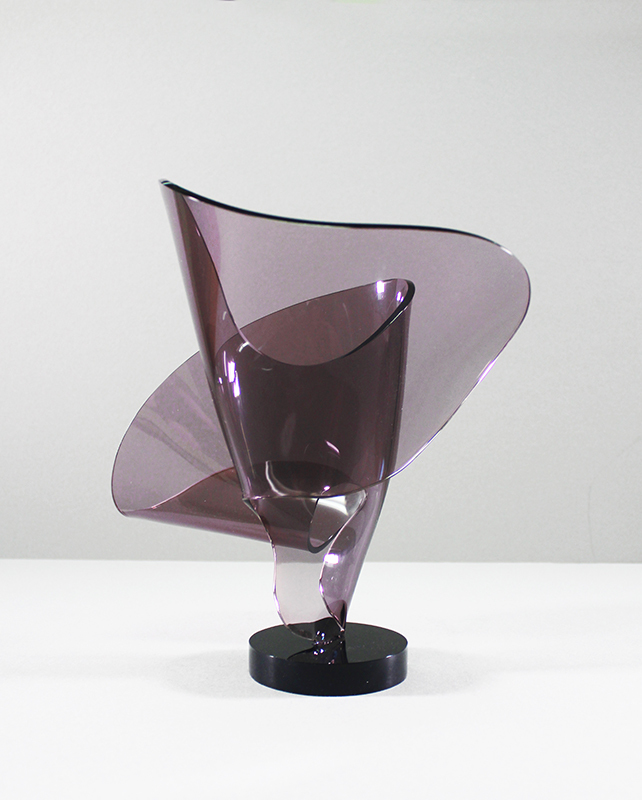
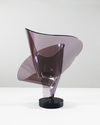
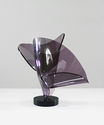
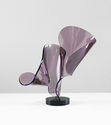
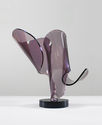

Corps Noir III (Black Body 3)
Terry Haass
Corps Noir III (Black Body 3)
Terry Haass
1923 - 2016 (biography)Terry Haass exhibited this work in the exhibition "Terry Haass Licht und Raum / Hommage a Albert Einstein" (Terry Haass Light and Space / Homage to Albert Einstein) at the Museum Bochum Kunstsammlung in Bochum, Germany, December 10, 1977 to January 22, 1978. It is listed in the catalogue as number 17, "Black Body III". Her exhibition "Homage to Albert Einstein" traveled for four years in France and across Europe.
In the forward of the catalog Einstein is quoted about his light/space theory: "I wanted to show that space-time is not necessarily something that can be given a life of its own independent of actual objects of physical reality. Real objects are not in space, but these objects are spatially extended. In this sense, the notion of "empty space" loses its meaning."
Haass comments about her responses in these acrylic works: "These sculptures were inspired by and dedicated to Albert Einstein's non-Euclidean geometry. The underlying idea is based on mutually influencing systems within flat, curved or vaulted shapes that symbolize finite-infinite space. The main concern of this work is to stimulate an increased mediation of abstract thinking."
In his catalogue raisonné on Haass' prints, Peter Spielmann wrote: "Furthermore, for Terry Haass the light is a presence of nature. By means of the light the human being realized the interelations [sic] between nature and himself. Terry Haass herself finds the light in nature. If we think of her experiences in the Northern countries, she also brings things which have been hidden in the dark for years, into the light. This was the work of the archaeologist. Elucidating the objects she at the same time transfers them from the past into the present. Thus it is no wonder that she had developed a very close relation to the philosophy and discoveries of Einstein. She doesn’t want to illustrate his theories but tries to find an artistic expression for the problems and solutions Einstein confronts us with. She focuses on the relationship between space, matter and light….In her view our problems are a questions of philosophy and of commitment to humanity; an attitude for which she admires Einstein. In her works the interelations [sic] between perceptions and formal expression intertwine. This has to do with the dimensions of time."
According to Christina Weyl's biography on Haass in her 2019 book "The Women of Atelier 17", page 227: "From the 1960s onward, her work - still mostly graphics but with the addition of sculpture in stainless steel, wood, and Plexiglas - focused on time and space, influenced heavily by science and Albert Einstein's theories."
Terry Haass (nee Terezie Goldmannová), printmaker, painter, designer, and sculptor, was born in Cesky Tesin, Czechoslovakia on 17 November 1923. She with her mother and half-brother fled Czechoslovakia in 1938 due to the rise of anti-Semitism and, by way of Switzerland, found their way to France. In Paris, she studied fashion and art at the Académie de la Grande Chaumière until she was once again displaced by war. In 1941, the family moved to the south of France and then were smuggled to Portugal where they were able to book passage to New York. They settled in the upper west side of Manhattan where she met and soon married Walter Haass, a German refugee.
Terry Haass received a scholarship to the Art Students’ League where she studied printmaking with Will Barnet and Harry Sternberg. She began working at Stanley William Hayter’s experimental workshop, Atelier 17, in 1947. Haass co-directed the workshop with artist Harry Hoehn in the spring and summer of 1951 when Hayter returned to Paris.
In 1951, Haass received a Harriet Hale Wooley scholarship to study color printmaking with Roger Lacourière in Paris where she also attended classes in Mesopotamian archeology at the École du Louvre. Over many years she participated in archaeological digs in the Middle East. A Fulbright Travel Grant allowed Haass to travel Norway where she was captivated by the light, the wind, and the water-swept rocks of the utmost islands in the fjord. She moved to Paris and became a French citizen in 1963. In the 1960s, her work was greatly influenced by Einstein’s theories of time and space and she incorporated these ideas into her sculpture.
Terry Haass died in Paris on March 1, 2016.






